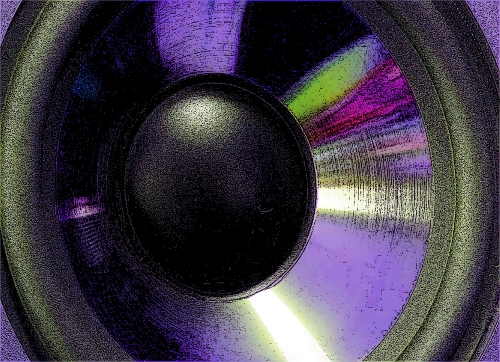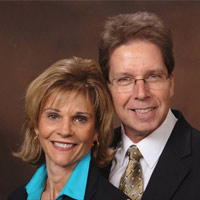The device commonly referred to as a “speaker” is more correctly referred to as a loudspeaker system. It is comprised of some transducers, a crossover network, an enclosure, and a few additional parts.
Loudspeaker system designers must be familiar with the complicated interactions of the components that form the system.
An assemblage of good parts does not guarantee a good system. (Note: For the remainder of this article I will refer to a loudspeaker system as simply a “loudspeaker.”)
If I had to pick one word to describe the loudspeaker design process it would be compromise. Every facet of a loudspeaker’s performance and ultimate cost is a result of trade-offs.
This is why it is very difficult to compare loudspeakers from different manufacturers. One may appear to be better by focusing on a single specification (such as its power rating), yet it may be inferior as a system when the performance of the whole is considered.
Let’s look at the parts that make up a loudspeaker in order to get a better understanding of why some are more expensive than others.
The Lowdown on Transducers
The heart of a loudspeaker is its transducers. These are the devices that actually convert electrical energy into acoustical energy. Most sound reinforcement transducers are pistons.
Today’s designs have changed little in operating principle from those produced by research done early in the last century. Technological advancements have produced better materials, lighter weight, and lower cost, but loudspeakers still basically produce sound by vibrating the air molecules around them through movement.
No single transducer can reproduce full-range sound at the levels required for auditorium use. For this reason most loudspeakers are two-way or three-way designs, with dedicated transducers for the low-frequency (LF), mid-frequency (MF), and/or high-frequency (HF) parts of the spectrum.
Three-way designs have more transducers, so they typically cost more than two-way designs.
All-Important Frame Design Components
One factor that makes a big difference in the price of low-frequency transducers is the frame design. Stamped frame loudspeakers are lower cost due to their ease of fabrication and lower raw material cost. Cast frame loudspeakers have less of a tendency to flex as the cone moves in and out.
They also tend to have higher mass and weight than stamped-frame models, as well as higher cost. Since transducers waste much of the applied electrical power, performance improvements can be realized by improving heat dissipation.
The cone material must compromise mass, strength, and cost. While some esoteric materials have been developed for loudspeaker cones, paper remains the most common material because it represents a good compromise between the required attributes. LF transducers range in cost from tens of dollars to hundreds of dollars.
The system designer’s motivation will determine which is used. If they are designing to meet a price point, they will use a cheaper unit. If they are designing for the highest quality performance, a pricier model may be selected.
The MF and HF components in sound reinforcement loudspeakers are usually horn-loaded designs. Horn loading produces high sound-pressure levels as well as control over the sound radiation pattern. Horns are constructed from a variety of materials, including wood, metal, fiberglass, and plastic.
ABS plastic horns are very popular due to their low cost, light weight, and ease of fabrication. Fiberglass horns are much stronger but they are also more difficult to fabricate, which increases their cost. Low-frequency horns are often made of wood since they can be very large.
The horn driver (a transducer) plays a major role in the performance of a loudspeaker system. They range from relatively low-cost, piezo-electric devices to compression drivers. Cone-type loudspeakers can also serve as horn drivers.
The compression driver is the optimal way to produce a lot of mid- and high-frequency sound. It is preferred over lower cost piezo-electric drivers for its high efficiency and fidelity.
Transducer magnet structure is a major cost factor. Large magnets produce higher field density (which generally equates to higher efficiency), accompanied by increased weight. This may necessitate a cast frame for support. Rare earth elements, such as Neodymium, produce stronger magnetic fields than conventional magnet types at a fraction of their weight. Neodymium is also the most expensive magnetic material commonly in use.
Some loudspeaker companies manufacture their transducers. This gives them full control over the supply chain and the ability to optimize a component’s performance for a given loudspeaker system.
Most loudspeaker manufacturers use Original Equipment Manufacturer (OEM) suppliers for their transducers. OEMs can be very efficient in the manufacturing process because it is all that they do. Most OEMs build a generic line of transducers that are sold to the public along with proprietary designs that are built to a loudspeaker manufacturer’s specifications.
Crucial Crossover Network
Though it is unheralded in its role, the crossover network is arguably the most difficult part of a loudspeaker to design. The crossover’s job is to band limit the signal to each transducer so that it only delivers frequency content that it can convert into sound. In principle, it is like the transmission of an automobile.
A good transmission will allow the wheels to spin faster and faster (increasing frequency) as you steadily increase the vehicle’s speed from zero to 60 mph. The gear changes should be smooth and free of glitches. A good crossover design does the same thing. It provides a smooth transition between the LF, MF, and HF transducers.
Passive crossovers, on the other hand, are filter networks of passive electrical parts — resistors, capacitors, and inductors. Mass-produced generic prefabricated designs are available; but ultimately the crossover network must be optimized for the specific transducers that it is driving. This is a task best left to a design engineer.
Some crossovers are mounted to printed circuit boards (PCB). These have a nice, clean look and are easy to mass produce, thereby reducing cost. This can work well for low-power applications, but the circuit boards can be damaged by heat if driven too hard.
They can also warp and crack from the stress caused by large inductors. This is why many manufacturers still hard wire their crossovers. This must be done by hand, and the result isn’t very pretty. But, the end result is more robust (and more expensive) than the PCB crossover.
Some loudspeaker systems have no internal crossover network. They are driven by dedicated electrical processors that perform the necessary signal processing before the signal is applied to the power amplifiers — an active loudspeaker system.
While this should reduce the cost of the loudspeaker system itself (less parts), loudspeakers of this type ultimately cost more to implement due to the required external processor and possibly extra amplifier channels. Active designs can yield higher fidelity and higher sound pressure level (SPL) than passive loudspeakers.
Even so, a good passive design can provide excellent performance at a lower overall cost, plus it is usually easier to implement than an active loudspeaker system.















